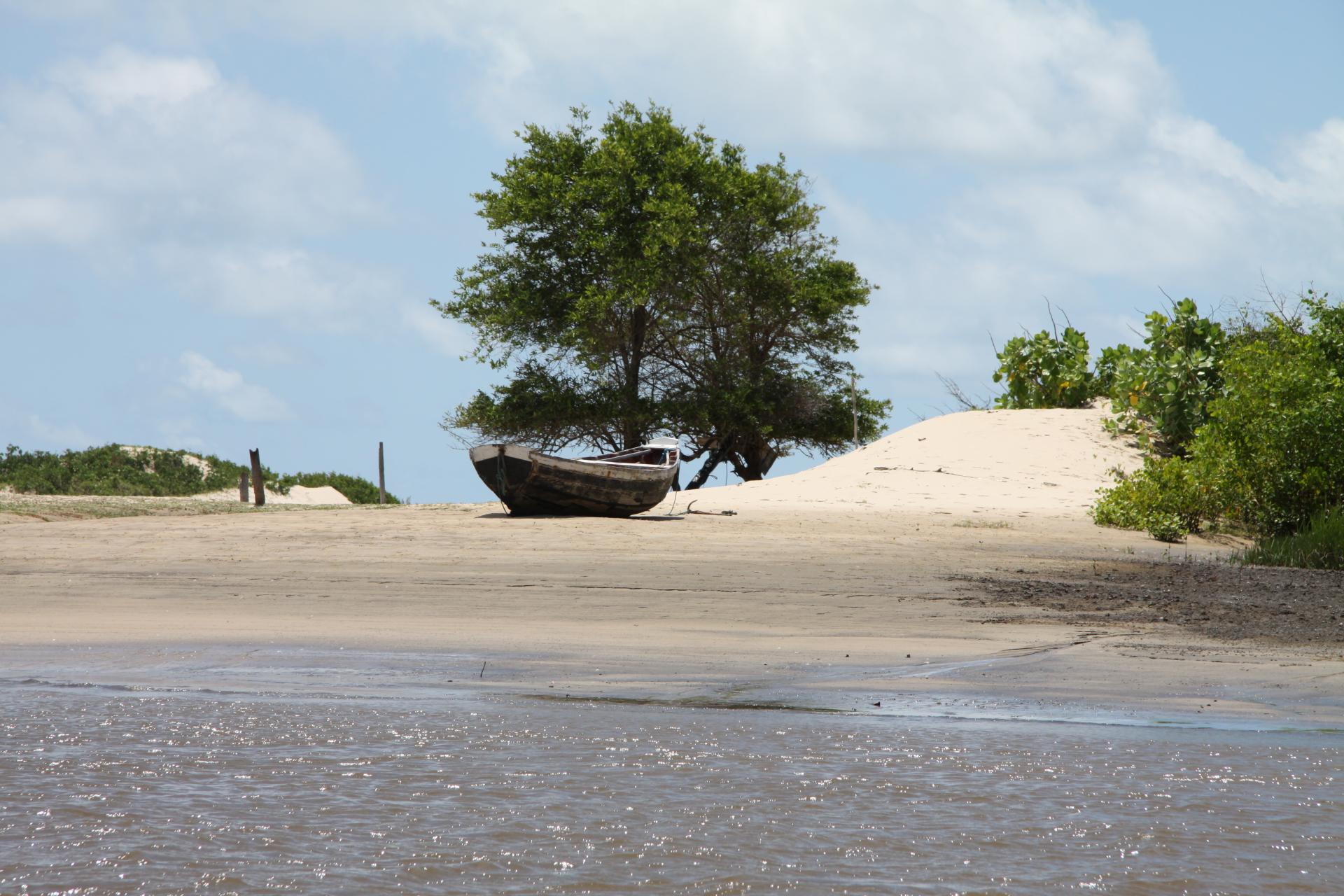Caburé - The Hidden Paradise in Maranhão

Endless beaches, imposing mangrove forests, vast dune landscapes, local cuisine, and warm hospitality - that's Caburé, a small cluster of local fishing families on a peninsula near Lençóis Maranhenses.
Brazil's hidden natural treasures are usually far from any known tourist trail and can require an expeditionary spirit to explore. Other special places are quite accessible, but still little known by name among Brazil travelers and can be found on few travel maps. One example of such a hidden paradise is Caburé in Maranhão, located on the north coast of Brazil and just west of the Lençóis Maranhenses National Park. Its dune landscape with freshwater lakes, unique in the world and covering more than 370,658 acres (1,500 square kilometers), is one of the most popular destinations on a trip to Brazil. If you want to be blown by the Atlantic wind and experience an "end of the world" feeling, Caburé is the right place for you.
The people of Caburé - life between sea, wind, and sand
While a few years ago the inhabitants of Lençóis Maranhenses were relatively isolated and lived mainly from fishing, nowadays the livelihood of traditional communities like Caburé increasingly depends on tourism. For all the benefits of the associated economic boom, it is the visitor's responsibility to ensure that this growth is sustainable and involves the locals. This means not only treating nature with respect, but also the people who have managed to survive for centuries, and in the case of the indigenous natives for millennia, in this seemingly unreal habitat. The so-called Turismo Comunitário aims at individual tours where visitors can get to know the life of the people, their traditions, arts, and food. The local cuisine, music, and handicrafts make a trip to Caburé a special experience. Since hardly any agriculture is possible on the sandy soil, the menu includes various fish and crustaceans as well as fruits and plants that are collected in the mangrove forests.
However, the economic basis is not only tourism but also the use of natural resources. The constantly blowing wind provides the best conditions for the generation of electricity by wind power. Therefore, about 1.86 miles (3 kilometers) from the main section of the beach of Caburé there is one of the largest wind farms in Brazil, which ensures the sustainable energy supply of the region.
Activities in Caburé - hiking, quad biking, kite surfing
Already the journey by boat on the Rio Preguiça to Caburé is a unique experience. Here on the river, sandy mountains meet the dense mangrove forests and tall Buriti palms. On the river beaches of Vassouras typical food is offered for lunch.
But one of the most beautiful experiences around Caburé is certainly a visit to the dune landscapes of the Pequenos Lençóis, which directly border the Rio Preguiça. The area is smaller than the dunes of the national park, but it is equal in beauty. It is possible to explore the landscape by buggy or quad, but to feel the vastness and silence of the dunes, visitors should set out on a hike.
Those seeking solitude can unwind on the endless beach of Caburé and watch the kite surfers. The sport is widespread throughout Brazil's northeastern coast, as the steady wind offers the best conditions and attracts professionals and beginners from all over the world.
However, when hiking to the end of the peninsula, visitors should always keep an eye on the tides to avoid getting caught in the current in the seemingly shallow waters.
The Caburé Peninsula - Between the forces of nature
The coastline is constantly changing, as can easily be seen by comparing current and old satellite images. The ocean currents in conjunction with the currents of the Rio Preguiça shape the sandy peninsulas, causing islands to form and sink back into the sea. The thin strip of beach in Caburé has thus thinned from about 400 meters to 180 meters in recent decades. It is therefore only a matter of time before the river breaks through to the sea, which will change the coastal landscape again.
This constant movement of sediments in the alternation of high and low tide and the strong wind have led, over the millennia, to the formation of the dunes of Lençóis Maranhenses. Since the water table is very high due to the river delta, and rainwater cannot drain away, the depressions between the dunes fill up during the rainy season and the characteristic lakes are formed. In particularly large valleys, the groundwater table is open, so that freshwater is available even until the end of the dry season, and oases have formed in the middle of Lençóis Maranhenses. These small green islands amidst the dunes are therefore home to traditional village communities, which, however, only consist of a collection of a few small houses.
Far away from the fast world - A trip to Caburé
Caburé and its peninsula are located directly west of Atins and about 4 hours by boat north of Barreirinhas, the classic gateway to the national park. Both places, and especially the boat trip, are popular and well-known destinations on a tour to Lençóis Maranhenses that should not be missed during any Brazil vacation.
The arrival of many visitors is usually from São Luis, the capital of the state of Maranhão.
It is also possible to get to know Caburé in combination with a tour along the Rota das Emoções, one of the most beautiful overland routes between Fortaleza and São Luis.
The beach and dunes of Caburé are popular stops on a jeep tour or boat trip. The small fishing village itself has the smallest tourist infrastructure compared to other places in the region and therefore offers special impressions and insights into the life of the locals in this unreal-looking place between mangroves, wide dunes, endless beaches, and the constantly blowing wind.
Sources: www.icmbio.gov.br, www.turismo.ma.gov.br, www.wikipedia.org

